The Advent of Electric Vehicles and the future of automobile industry
Significant development in automotive industry – part2
The Advent of Electric Vehicles and the future of automobile industry
The rise of electric vehicles started in the 2000s with the introduction of Tesla Roadster and Tesla Model S, which not only set new standards in the automotive industry but also transformed the transportation experience. This innovation paved the way for the next breakthrough: the advent of autonomous vehicles. Leading companies such as Google’s Waymo, and Tesla have been at the forefront of developing fully autonomous vehicles.
The Rise of Electric Vehicles (2000s-Present)
In the 2000s, Tesla took the lead in the electric vehicle (EV) revolution. With the launch of Tesla Roadster in 2008 and Tesla Model S in 2012. Elon Musk’s company played a huge part in pushing the car industry toward a more sustainable, electric-powered future.
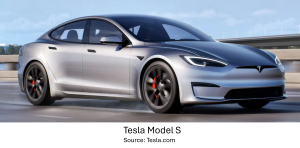
The Arrival of Self-Driving Cars (2010s-Present)
Self-driving cars have been a game changer in recent years. Companies like Google’s Waymo and Tesla have been leading the way in developing fully autonomous vehicles. These cars rely on a combination of sensors, machine learning, and AI to navigate without human intervention. Tesla’s Autopilot, launched in the 2010s, and Waymo’s driverless taxis are big steps forward in this technology.
The EV Revolution and Charging (2020s)
Big car brands like Volkswagen, Ford, and General Motors have announced plans to go fully electric in the coming decades. Improvements in EV charging and battery tech are helping push this shift even further. Additionally, several cities worldwide are actively pushing for a transition to electric transportation as part of their efforts to combat climate change. These cities are implementing policies to reduce emissions, improve air quality, and promote sustainable mobility. Here are some notable examples: Oslo, Amsterdam, London, Los Angeles, Beijing, Berlin,Singapore, Shanghai, Mardid, among others.
The future of automobile industry
The automobile industry continues to evolve rapidly with the development of Hydrogen Fuel Cell Vehicles and Flying Cars as groundbreaking innovations that redefine transportation by offering cleaner, more sustainable alternatives and unlocking entirely new possibilities for mobility.
What is worth knowing about HFCVs?
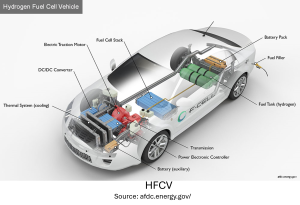
Hydrogen Fuel Cell Vehicles (FCVs) have several unique characteristics that distinguish them from traditional internal combustion engine vehicles and battery-electric vehicles. Here are the main features:
- Zero Emissions: FCVs produce no harmful emissions. The only byproduct of the chemical reaction inside the fuel cell is water vapor, making them an environmentally friendly alternative to gasoline or diesel-powered vehicles.
- Hydrogen as Fuel: These vehicles run on hydrogen gas, which is stored in high-pressure tanks. The hydrogen is used in a fuel cell to generate electricity, which powers the vehicle’s electric motor.
- Fuel Cell Technology: Hydrogen fuel cells work by combining hydrogen with oxygen from the air in an electrochemical reaction to produce electricity. The electricity generated is used to power the electric motor, while the excess heat and water vapor are released.
- Refueling Time: One of the major advantages of hydrogen fuel cell vehicles is their fast refueling time. It typically takes just 3-5 minutes to fill up a hydrogen tank, similar to refueling a conventional gas vehicle.
- Range: FCVs generally offer a longer range than battery-electric vehicles (BEVs), with some models capable of driving up to 300-400 miles on a full tank of hydrogen. This makes them a good option for long-distance travel.
- High Efficiency: Fuel cell vehicles are highly efficient, converting chemical energy in hydrogen directly into electricity with little energy loss in the process.
- Quiet Operation: Like battery-electric vehicles, hydrogen fuel cell vehicles are very quiet. There are no internal combustion engine noises, offering a smooth and quiet driving experience.
- Limited Infrastructure: A significant challenge for hydrogen vehicles is the limited availability of hydrogen refueling stations, especially compared to electric vehicle charging stations. This limits the widespread adoption of FCVs.
- Hydrogen Production: While hydrogen is abundant, it’s not readily available in its pure form and must be produced. The process of extracting hydrogen—often from natural gas or water—can have environmental impacts depending on the method used. However, green hydrogen production methods, such as electrolysis using renewable energy, are emerging.
- Cost: Hydrogen fuel cell vehicles tend to be more expensive than conventional vehicles and electric vehicles due to the complexity of fuel cell technology and the costs associated with producing hydrogen. However, costs are expected to decrease as the technology matures and economies of scale are achieved.
What is worth knowing about Flying Cars?
Flying cars, often referred to as “vertical takeoff and landing” (VTOL) vehicles or “urban air mobility” (UAM), have been a topic of research and development for many years. They combine aspects of both aviation and automotive technology to enable vehicles that can drive on roads like a car but also take off and fly like an aircraft.
One of the earliest attempts to create a flying car was by Glenn Curtiss, an aviation pioneer in the early 1900s. In 1917, Curtiss developed a concept called the Autoplane. It was essentially a combination of a plane and a car, featuring wings that could be folded. While the Autoplane never became operational, it was one of the first attempts at making a flying vehicle.
Here are a few key concepts and technologies involved in flying cars:
- Vertical Takeoff and Landing (VTOL) :This technology allows a vehicle to take off and land vertically, without needing a traditional runway. VTOL vehicles are particularly well-suited for urban environments where space is limited.
- Electric Propulsion: Many flying car prototypes are powered by electric motors, which provide a quieter, cleaner alternative to traditional combustion engines. These vehicles often rely on battery power or hybrid systems to power their motors.
- Autonomous Flight: Some designs incorporate autonomous technology, which could allow the vehicle to operate without human intervention, making it safer and more practical for use in busy urban environments.
- Multi-Modal Capability: Many flying cars can transition seamlessly between driving on roads and flying in the air, offering versatility for short and long journeys.
- Compact Design: Designed to be compact and foldable, some models can fit into standard parking spaces when not in flight mode.
- Parachute Deployment: Emergency parachute systems for safe landing in case of a major malfunction.
- Quiet Operation: Electric motors and advanced propellers minimize noise, making flying cars suitable for urban environments.
- Comfortable Interiors: Spacious, ergonomic cabins with luxury features like adjustable seating, panoramic views, and smart infotainment systems.
- Speed and Range: Speeds ranging from 100 to 200 mph (160 to 320 km/h) with ranges of 200-400 miles depending on the model and power source.
- Payload Capacity: Ability to carry 2-4 passengers and their luggage.
- High Altitude and Weather Adaptability: Designed to operate in diverse weather conditions with pressurized cabins and advanced weather prediction systems.
- Regulatory issues: Airspace management, traffic control, and safety regulations are still being worked out by aviation and transportation authorities.
- Infrastructure: New infrastructure, like “vertiports” (small airports for flying cars), would need to be developed.
- Battery technology: For fully electric flying cars, advancements in battery efficiency and range are needed to make the vehicles practical for everyday use
Current Developments:
Several companies and organizations are actively working on flying car prototypes, such as:
- Terrafugia (owned by Geely, the parent company of Volvo) has developed a prototype called the Transition, which can be driven on roads and flown like an aircraft.
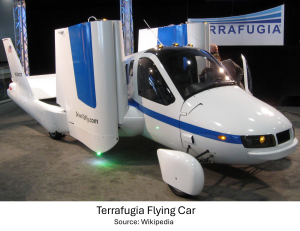
- Joby Aviation is focused on electric VTOL aircraft for urban air mobility and has raised significant funding.
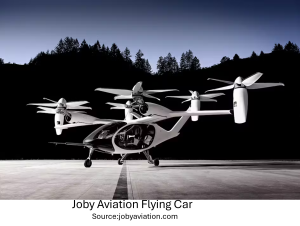
- Lilium is developing a high-speed electric jet that can take off and land vertically.
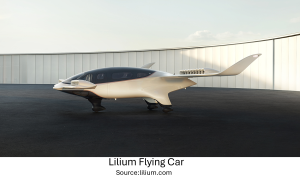
- AeroMobil has created a flying car prototype that can convert between a car and an airplane.

Imagine the day when personal flying vehicles might relieve traffic jams in cities or even offer a new mode of travel for intercity commuting. The future of transportation might be a whole lot more exciting than we ever expected!





